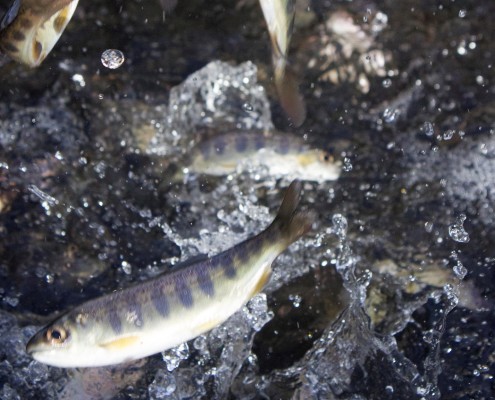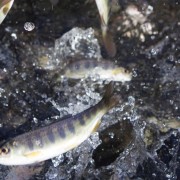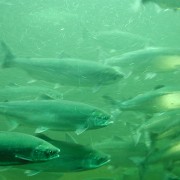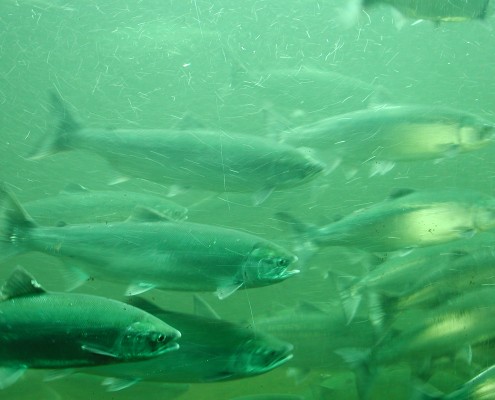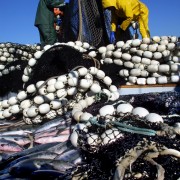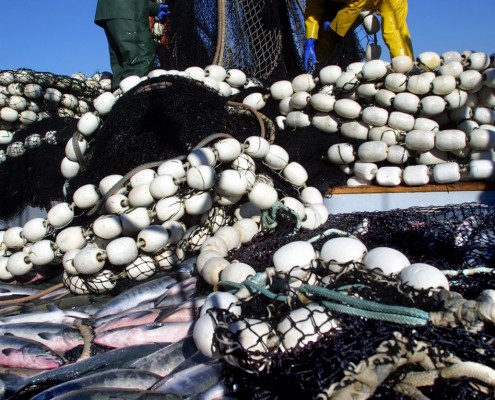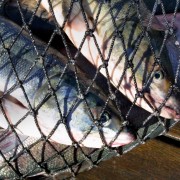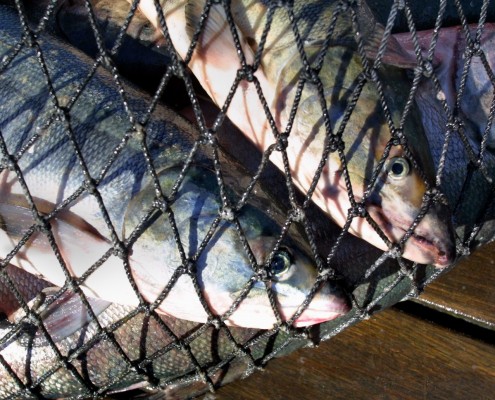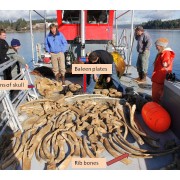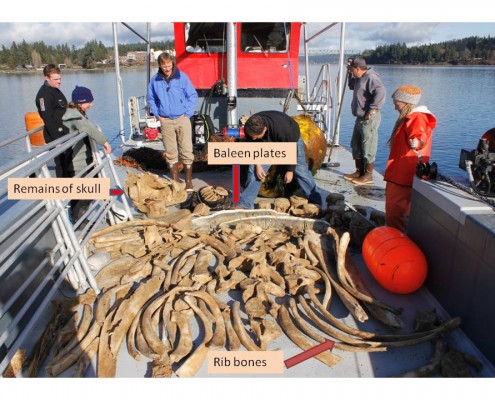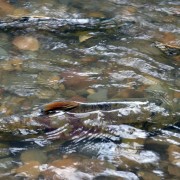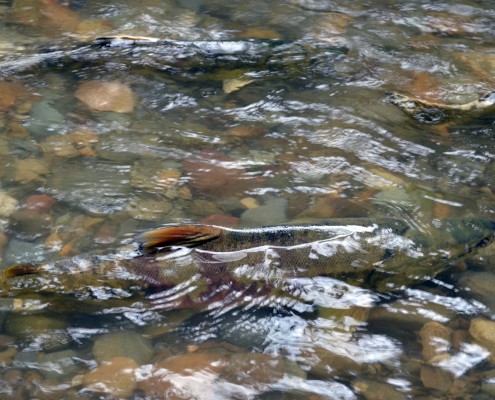Finfish
Suquamish is one of 24 Treaty Tribes in the Puget Sound Area that co-manage finfish resources with Washington Department of Fish and Wildlife and is involved in a wide variety of activities to ensure the sustainable management of finfish harvests and protection of aquatic ecosystems. The Tribe employs professional biologists and technicians who actively manage a number of finfish species that include salmon (chinook, coho, chum, sockeye and pink), halibut and other finfish (herring, smelt, rockfishes, flounders and more) within the Tribe’s Usual & Accustomed harvesting areas.
Salmon Enhancement
Rearing and hatchery facilities managed by the Suquamish Tribe that enhance the Central Puget Sound salmon population and provide for Tribal harvest opportunities. more…
Cowling Creek Center
Programs and facilities where students and community members can learn about the importance of salmon to the Suquamish People and the Puget Sound. more…
Salmon Recovery
Cooperative projects with Tribal, state and federal agencies, groups and property owners to improve salmon habitat through restoration, protection and education. more…

Chief Kitsap Academy students learning about salmon.
Cultural Heritage & Harvest
Since time immemorial, the Suquamish People have relied on salmon for food, family use, ceremonial feasts and for trade. Due to the absence of a major river with large salmon runs in their immediate territory, the Suquamish had to travel to neighboring marine areas and beyond to harvest salmon. Today, salmon remains a staple in the diets of Tribal people and is always served at community gatherings. Salmon is also the primary source of income for many Tribal families. The Suquamish Tribe is committed to maintaining the health and productivity of salmon to ensure availability for future generations.
Salmon Management
Survival of salmon in the Northwest is paramount to the Suquamish People. Suquamish, along with other Northwest Treaty Tribes, co-manages salmon fishing throughout the region in a unique government-to-government relationship with Washington State Department of Fish and Wildlife. Each year Suquamish and other Northwest Treaty Tribes work with the Washington State Department of Fish and Wildlife to determine salmon fishing regulations. Suquamish biologists study fish populations and provide annual assessments on the health of salmon throughout the Tribe’s usual and accustomed fishing areas. These studies help determine whether a specific salmon species or run is healthy enough to harvest in the coming season, and provides a framework for policy setting and annual fishing regulation. Additionally, Suquamish spearhead salmon habitat recovery efforts and enhancement programs to revive weak salmon populations.
Treaty Harvest
The Point Elliot Treaty of 1855, signed by Chief Seattle on behalf of the Suquamish Tribe, reserved rights for the Tribe to harvest fish and other resources in its historic and territorial waters. The Boldt Decision reaffirmed these rights and set the stage for the unique co-management structure currently utilized by Suquamish, other Northwest Treaty Tribes and the Washington State Department of Fish and Wildlife.

